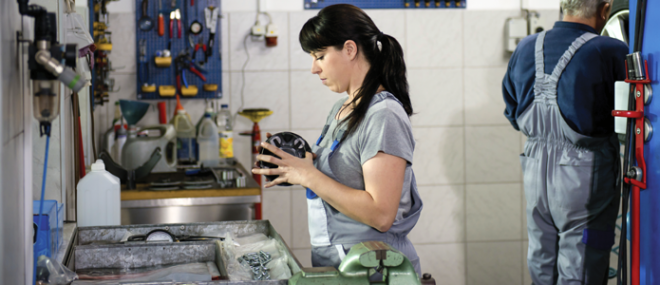As companies grow and projects develop, they can become tantalizing targets for thieves. That’s why construction site security is a major concern for business owners – and if it isn’t, it should be. In Canada, estimates put the cost of construction theft at up to $1 billion in 2021.
While heavy machines and tools may seem unwieldy, they can be surprisingly easy to steal, easy to hide, and easy to move. On top of that, the recovery rates of stolen equipment are not high, which means a heist could lead to a significant loss for your construction business that offsets the gains you’ve made.
Risks come in different forms
While some costly cases of equipment theft can be traced to local thieves, organized crime has also moved onto building sites, and stolen equipment from Canada has wound up halfway across the world. In fact, construction equipment can attract all kinds of criminals, and there are several ways they can get at your wares.
Lots of faces on a single site
Construction sites are often teeming with subcontractors, and that can make it difficult to spot intruders. Even if you have a memory for faces, and go out of your way to personally greet everyone every day, managing a construction site brings distraction. If you happen to be away from the site, you must count on others to be just as vigilant as you – and that can be a lot to ask.
Gates aren’t guarantees
Fences and gates may seem pretty sturdy, but they don’t always provide the protection you would expect. The same goes for heavy equipment. “Strong and sturdy” doesn’t always mean “secure”.
The equipment cost is just the beginning
Losing your expensive tools, machines, and accessories can lead to a big hit to your bottom line, but things can get worse in the days and weeks to come. After all, when you don’t have the tools you need to complete a build, the delay can dry up your revenue stream – and you might lose the contract altogether. Could your company recover from that double whammy?
Tips to help you protect your construction tools and equipment
Company-wide security protocols should apply to employees at every level of the organization and be woven into daily operations. Consider beginning the process with thorough background checks for staff, and then think about where and how you can put smart measures in place to help deter theft around the clock.
Keep records up-to-date. Current inventory and detailed records should play a major role in your theft defense plan. Be sure to list important information relating to your tools and equipment, including:
- Serial number
- Make and model
- Year built
- Date purchased (and value at time of purchase)
- Any markings, logos, or other details that help with identification
It’s always a good idea to include photos, too. Physical images of each item, along with a careful description, can increase the chances that the piece will be spotted and recovered if thieves were to make off with it.
It is also important to introduce some physical deterrents to your worksite. But before you invest in a comprehensive, state-of-the-art security system, take a close look at what your business really needs.
Customizing your theft defense: the multi-layered approach
Any theft prevention plan should balance an appropriate level of protection with a good use of resources. For instance, a small business with one well-contained location won’t necessarily need the same security measures as a large, heavily-equipped worksite would.
One way to build a suitable theft prevention program for your construction or contracting business is to use different layers of security measures according to your needs. The first layer includes measures that are generally low cost, but they’ll effectively bump up your basic security. Some common examples include:
- Locking doors
- Removing keys
- Parking in well-lit areas with good visibility
- Securing equipment together
- Storing equipment somewhere with controlled access
- Ensuring the engine compartment area is locked and secure
The second level of security attends to specific pieces of equipment and tools, and introduces some tech-savvy protection. Here are some layer-two additions to consider:
- Visible or audible warning devices to deter thieves, such as alarms
- Steering column collars
- Steering wheel and brake pedal locks
- Locks for tracks, cylinders, fuel caps, wheels, hitches, and pins
- Wheel boots
- Hydraulic lock-out systems
- Cab shields and laminated glass
- Tire deflators
- VIN or ID numbers etched onto windows and parts (using microdot technology)
The third layer of theft prevention can come into play for companies that own and operate fleets of vehicles or machines that are frequently moved around. Some third-layer measures include:
- Engine immobilizers
- Smart keys or key transponder systems, like Caterpillar MSS
- Cab control access code systems
- Fuse cut offs or kill switches
- Starter and fuel disabler switches to prevent “hot wiring”
The fourth and final layer of anti-theft measures involves sophisticated systems to monitor and control costly equipment, such as:
- GPS Tracking systems
- Geo fencing systems
- Motion sensor lighting and surveillance cameras positioned around the storage yard
When your rented equipment is stolen, counting on the rental company to absorb the total cost of the loss may be a mistake. You should familiarize yourself with your insurance coverage, and remember that it’s in your best interest to do what you can to prevent the theft in the first place. Finally, consider specialized training for your workforce so your whole company can help keep the worksite safe and secure.




